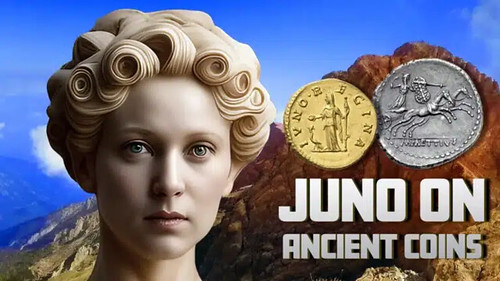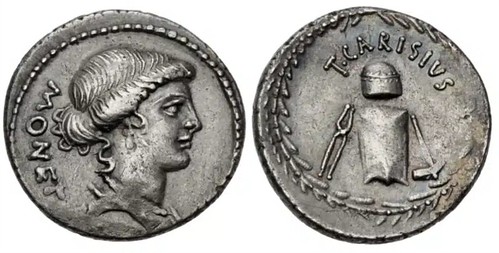
PREV ARTICLE
NEXT ARTICLE
FULL ISSUE
PREV FULL ISSUE
JUNO ON ANCIENT COINSMike Markowitz published a nice article on CoinWeek about Juno on ancient coins. Here's an excerpt - see the complete article online for much more. -Editor FOR ANCIENT ROMANS, Juno (Iuno in Latin) was the queen of the gods, sister and wife of the supreme deity, Jupiter. She was identified with the Greek goddess Hera, although Romans worshipped her under many different local cults.
As Juno Sospita (
As Juno Moneta (
As Juno Lucina ( Many other attributes and epithets became attached to this complex goddess, and these symbols found their way onto coins produced over the course of centuries. In the ancient world there was no separation of church and state, and the official state religion was widely illustrated and celebrated on the coinage. During the time of the Western Roman Empire, images of Juno were especially common on coins issued in the names of empresses. Juno Moneta T. Carisius. 46 BCE. Silver Denarius 3.90 g, Crawford 464/2. Classical Numismatic Group > Auction 121. 6 October 2022 Lot: 749. Realized: $2,000.
Juno Moneta (
This coin is enormously popular with collectors because it is one of the few types that depicts the implements used to strike ancient coins. One the reverse, we see a hammer, an anvil, a pair of tongs used to handle hot blanks, and a decorated rounded object that is usually described as a
To read the complete article, see:
Wayne Homren, Editor The Numismatic Bibliomania Society is a non-profit organization promoting numismatic literature. See our web site at coinbooks.org. To submit items for publication in The E-Sylum, write to the Editor at this address: whomren@gmail.com To subscribe go to: https://my.binhost.com/lists/listinfo/esylum All Rights Reserved. NBS Home Page Contact the NBS webmaster 
|


